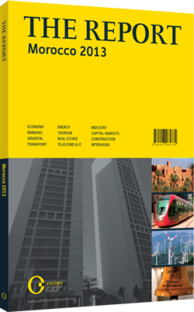In a strong position: Phosphates continue to lead the sector
Like most sectors, the mining industry is sensitive to changing economic conditions, with its overall performance fluctuating significantly as demand from China and elsewhere tightens and regulatory burdens become more onerous. But despite this short-term volatility, the trend for phosphate prices is likely to be more stable in the longer run due to positive long-term fundamentals.
Phosphates are used to make phosphoric acid and fertilisers, meaning that the demand for phosphates will only rise as the world’s population grows. From 50m tonnes a year now, the demand for fertiliser is projected to rise to about 70m tonnes in 2020, or an average growth rate of 3.6% per year, requiring an extra 2m tonnes of fertiliser every year.
Morocco’s OCP Group, which exercises the government’s monopoly on phosphate production, is only too aware of these predictions: a ticker on the company’s website shows the constant progression of world population, along with information on what that will mean for fertiliser demand.
COUNTING THE RESERVES: Morocco contains more than half of known reserves on the planet – one report by an agricultural think tank, the International Fertiliser Development Centre, estimated it at 85% – and is the leading exporter in the world in phosphate rock and phosphoric acid, while the US leads in finished phosphate fertiliser exports. After a dip in 2010, the demand for Moroccan phosphate recovered in 2011 and continued to grow in 2012, representing 26.3% of total exports. It is now pursuing new ways to grow its production even further.
Morocco’s state-owned OCP is investing Dh91bn (€8.09bn) between 2010 and 2020, to expand annual phosphate rock mining capacity from 30m tonnes to 50m tonnes by 2015, in order to grow its presence in downstream fertiliser production.
NEW LOANS: The African Development Bank (AfDB) is working to support the OCP with a new €200m loan. “This loan is the first non-sovereign financing that the AfDB has given to a Moroccan company – it’s a milestone showing the bank’s commitment to support African companies,” the institution wrote in a press statement announcing the loan.
In addition, Morocco attracted a record-high amount of funding from the AfDB in 2012 (€1bn approved out of a €3bn budget for 2012-16). Amani Abou-Zeid, Morocco’s resident representative for the AfDB, said the country’s clear vision makes it easier for partners to support its work.
SEIZE THE OPPORTUNITY: The loan will allow Morocco to expand its industrial Jorf Lasfar platform for the production of phosphate fertilisers. The Jorf Lasfar phosphate hub will grow to 10 “plug-and-play” chemical plants built on a common template in a shared infrastructure platform to reduce costs, according to OCP. These plants, linked by the pipeline to a reliable source of phosphate rock, will permit expanded, efficient production of phosphate-derived products to be shipped from the nearby, upgraded Jorf port facility. OCP has invested in the first four platforms itself and the other platforms are planned to be built with various industry partners.
Meanwhile OCP continues to exercise the government’s monopoly on the exploration and extraction of phosphates in Morocco. Total sales worth Dh50.3bn (€4.47bn) were made in phosphate exports in 2011, up from Dh35.6bn (€3.17bn) in 2010.
According to the OCP, it is the leading exporter of phosphate rocks (36.4% of the global market) and phosphoric acid (51% of global market).
Government forecasts have predicted that growth in the mining sector will likely ride out the recent global economic downturn with minimal difficulty.
The government forecasts that international phosphate demand will steadily increase until at least 2016, expanding at a yearly average rate of some 3.1%. The phosphate mining industry will drive that growth, but the rest of the mining industry could also play an important role if the new code becomes law.
You have reached the limit of premium articles you can view for free.
Choose from the options below to purchase print or digital editions of our Reports. You can also purchase a website subscription giving you unlimited access to all of our Reports online for 12 months.
If you have already purchased this Report or have a website subscription, please login to continue.

